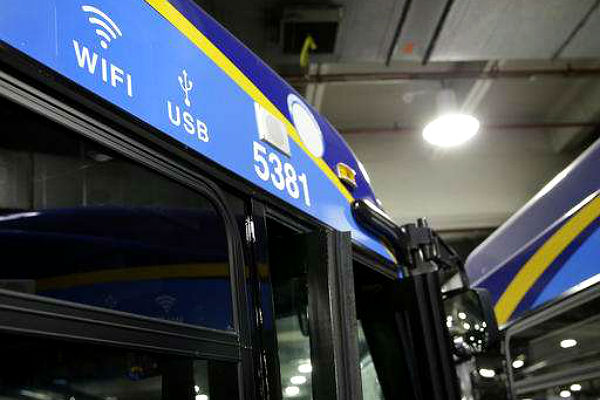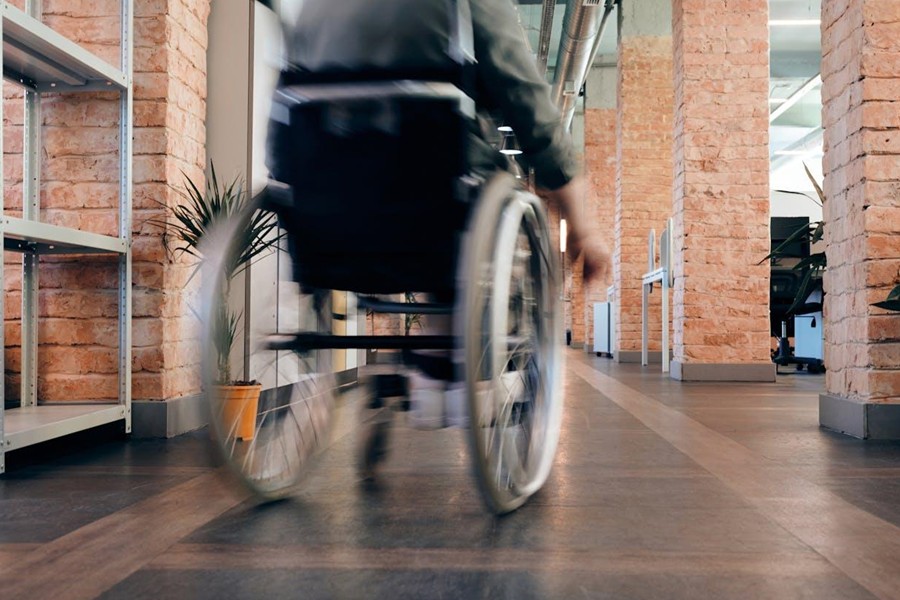 There are some nifty features on New York City’s sleek new fleet of more than 2,000 buses, the first of which began hitting the streets this past week.
There are some nifty features on New York City’s sleek new fleet of more than 2,000 buses, the first of which began hitting the streets this past week.
But as modern as the buses are, with USB charging ports and free Wi-Fi, most will still initially lack technology to address perhaps the worst safety issue with the big vehicles, hitting pedestrians while making turns.
“Amenities like Wi-Fi are welcome, and they certainly add to the experience of riding the bus, but the first priority should be on improvements to buses that save lives,” said Paul Steely White, executive director of the Transportation Alternatives advocacy group.
Nationwide, collisions between pedestrians and city buses result in roughly one pedestrian death every 10 days, according to an estimate from the Amalgamated Transit Union, which blamed blind spots stemming from how buses are designed.
Bus drivers have long complained about how the placement of large side mirrors and the thick pillar frames of the buses themselves can essentially make pedestrians disappear.
The Metropolitan Transportation Authority began unveiling the new, $755,000 buses this past week at a news conference conducted by Gov. Andrew Cuomo. Through this summer, 75 new buses will be added, with a total of 2,042 put on the streets over the next five years, replacing nearly 40 percent of MTA’s fleet.
The MTA announced last year it would start testing two different safety technologies that it hopes will eventually improve safety on the vehicles: a pedestrian turn warning system and a collision avoidance system.
The warning system would be external, with speakers issuing audible warnings aimed at informing pedestrians, bicyclists and other vehicles that the bus was making a left or right turn. The volume would adjust based on the noise of the area. The collision system would use sensors to alert the bus driver with visual and audio alerts if a forward or side crash was imminent.
After initial small-scale evaluations, the pilot program has been expanded to 60 buses, with the goal of testing the systems on up to 300 buses this year. The MTA said implementing the technology across its entire bus fleet would cost an estimated $20 million for the pedestrian warning system and $57 million for the collision avoidance system.
“Testing these systems is part of our ongoing commitment to improving the safety of our customers, pedestrians, and bicyclists,” said MTA spokesman Kevin Ortiz. “These tests will take this commercially-available technology and hopefully show that we can put it to practical use on a larger scale under New York City operating conditions.”
Other cities including Boston and Portland, Oregon, have also looked into warning systems to reduce the risk of dangerous incidents. Peter Bartek, vice president at Protran Technology, a company that makes these kinds of alert systems, said systems were in place on buses in Chicago, Los Angeles and the greater Cleveland area, among others.
New York City tolled 183 pedestrian deaths from traffic accidents of all kinds in 2013, up from 158 in 2011. That spurred Mayor Bill de Blasio to make reducing such deaths a major goal of his administration, and they did indeed decline to 136 in 2015, of which seven pedestrian fatalities and one bicycle fatality involved MTA buses. Those eight deaths included a stretch last year when three people were killed in a month.
So far in 2016, there have been 22 deaths, with 1,925 injuries. None have involved city buses.
Part of efforts to reduce traffic deaths in New York City is a Right of Way law which makes it a misdemeanor for car and other vehicle drivers to hurt pedestrians and bicyclists who have the right of way. At least 11 bus drivers have been arrested for Right of Way violations since the law took effect in August 2014, according to the New York Police Department.
That only adds to the existing necessity of getting these technologies onto buses, said J.P. Patafio, a vice president at Transport Workers Union Local 100, which represents the drivers.
“It has to happen today,” he said. “We need this technology to compensate for the blind spots on the bus.”
Via source
Become a Harlem Insider!
By submitting this form, you are consenting to receive marketing emails from: Harlem World Magazine, 2521 1/2 west 42nd street, Los Angeles, CA, 90008, https://www.harlemworldmagazine.com. You can revoke your consent to receive emails at any time by using the SafeUnsubscribe® link, found at the bottom of every email. Emails are serviced by Constant Contact








